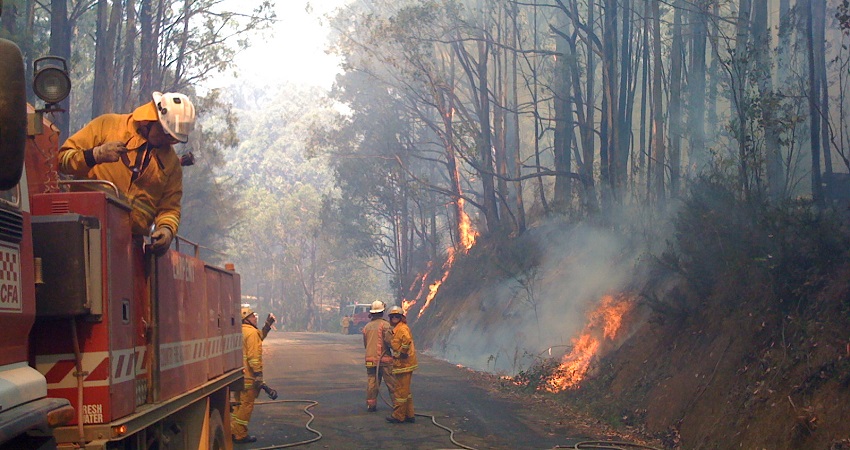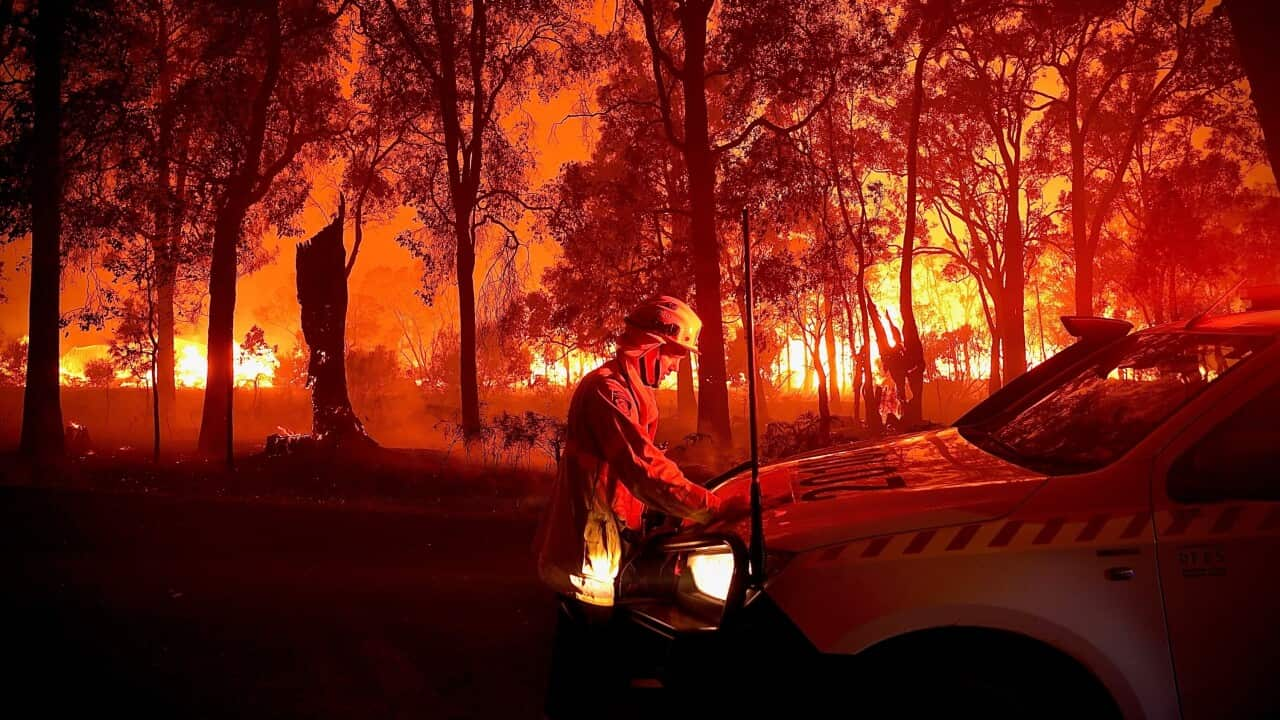BMP Basics: Safeguarding Your Home Against Bushfire Risks
Wiki Article
Best Practices in Bushfire Administration for Comprehensive Fire Defense
In the realm of bushfire management, the mission for thorough fire protection demands a careful approach that includes different crucial elements. From extensive threat evaluation and strategic planning to the application of efficient greenery administration strategies, the range of best practices is substantial and complex. Neighborhood engagement and education and learning play pivotal roles in promoting strength and preparedness, while early detection and caution systems function as vital safeguards. In addition, the smooth control of emergency situation feedback and discharge plans is necessary for ensuring the safety and well-being of people despite rising bushfire hazards. As we navigate through the subtleties of these ideal practices, an expedition right into the complex web of techniques and methods awaits, promising a much deeper understanding of the diverse landscape of bushfire management for comprehensive fire defense.Risk Evaluation and Preparation
In bushfire monitoring for fire protection, the first step includes performing a comprehensive threat assessment and establishing a comprehensive plan to minimize possible risks. Threat assessment is an important process that includes determining, analyzing, and assessing possible risks that could cause a bushfire. This analysis considers different aspects such as weather, topography, fuel tons, and human tasks in the location. By recognizing these risks, fire security authorities can focus on areas that are most vulnerable to bushfires and designate sources properly.By having a distinct plan in area, emergency situation services can act quickly and efficiently to secure lives, residential property, and the atmosphere throughout a bushfire break out. Reliable danger analysis and planning are fundamental parts of bushfire management for making certain extensive fire defense.
Greenery Administration Strategies
After carrying out a comprehensive threat assessment and creating a detailed prepare for bushfire management, the focus moves to executing efficient plant life management methods. Plant life management plays a critical duty in decreasing the intensity and spread of bushfires. One crucial approach is creating defensible space around residential or commercial properties by removing combustible plant life and keeping a safe distance between plant life and structures. This helps to create a buffer zone that can slow down the development of a fire and supply a more secure environment for firefighters to defend residential or commercial properties.Along with producing defensible area, prescribed burning is another vital plant life management strategy. Suggested burns entail intentionally setting fires under regulated problems to minimize the build-up of gas, lower the probability of high-intensity wildfires, and promote ecological community wellness. By tactically burning locations with excess plants, fuel degrees are minimized, making it harder for fires to spread swiftly and uncontrollably.

Area Involvement and Education And Learning
Efficient community engagement and education are essential components in developing a durable and positive method to bushfire monitoring. By entailing area members in the planning and execution of bushfire administration methods, stakeholders come to be active individuals in safeguarding their homes and areas. Area interaction fosters a feeling of common duty and encourages residents to take ownership of their security.Education and learning plays an essential duty in equipping people with the expertise and skills needed to alleviate bushfire dangers properly. Supplying educational resources on fire avoidance, emptying treatments, and the significance of very early detection can substantially improve neighborhood preparedness. Educating homeowners on the neighborhood bushfire setting, Bushfire Risk consisting of fire behavior and danger variables, allows them to make enlightened decisions during risky situations.
Via recurring involvement and education and learning efforts, areas can establish a cumulative understanding of bushfire hazards and work collaboratively to decrease the effect of wildfires. By fostering a culture of readiness and resilience, community members can enhance their capacity to respond efficiently to bushfire emergency situations and safeguard both lives and residential property.

Very Early Detection and Warning Equipments
Neighborhood interaction and education and learning function as fundamental columns in establishing aggressive bushfire administration methods, laying the foundation for the application of durable very early detection and warning systems. Early detection and warning systems are crucial elements in mitigating the effect of bushfires on communities and the setting. These systems include an array of methods and modern technologies aimed at recognizing and alerting authorities and residents to possible fire outbreaks promptly and effectively.One crucial element of early discovery systems is the use of advanced tracking modern technologies such as satellite imagery, drones, and weather terminals to find indicators of possible fire ignition. These innovations give real-time data that can be analyzed to recognize fire-prone locations and set off early warnings. Furthermore, the combination of community-based tracking networks and automated sharp systems can boost the efficiency of early discovery initiatives by involving residents in reporting possible fire dangers and getting prompt cautions.
Reliable very early detection and caution systems depend on a multi-faceted approach that integrates technical development, community involvement, and swift emergency situation reaction methods to make certain the prompt and coordinated management of bushfire occurrences. By purchasing these systems and promoting collaboration between stakeholders, neighborhoods can enhance their strength to bushfires and reduce the connected dangers.
Emergency Action and Discharge Plans
A extensive and well-coordinated emergency situation reaction and emptying strategy is essential for efficiently safeguarding lives and property throughout bushfire cases. These strategies must be thoroughly crafted, taking into consideration aspects such as the topography of the area, the density of vegetation, and the prospective rate and instructions of the fire's spread.One vital facet of an emergency response strategy is the establishment of clear communication networks to disseminate timely and accurate information to homeowners and emergency situation -responders. This can consist of utilizing alarms, mobile signals, social media, and area meetings to make sure that everyone is informed and understands what actions to take.
Discharge paths need to be pre-identified and routinely kept to guarantee they are easily accessible during emergency situations. Additionally, designated evacuation centers need to be established to supply sanctuary, medical support, and support solutions to evacuees.
Routine drills and workouts are important to acquaint residents with discharge procedures and check the efficiency of the plan. By continuously upgrading and evaluating emergency response and evacuation strategies, communities can enhance their preparedness and strength when faced with bushfire risks.
Verdict
Finally, reliable bushfire management needs an extensive technique that includes risk evaluation, plant life management, area involvement, early detection systems, and emergency response strategies. By implementing these ideal methods, communities can much better secure themselves from the damaging effects of bushfires - BAL Assessment. It is vital to focus on positive steps to alleviate the dangers postured by bushfires and ensure the security and well-being of people and neighborhoods in dangerAfter performing an extensive threat analysis and establishing a detailed strategy for bushfire management, the focus moves to executing effective vegetation administration strategies.Efficient neighborhood involvement and education and learning are vital parts in developing a resilient and aggressive approach to bushfire monitoring. By including area members in the planning and execution of bushfire monitoring methods, stakeholders end up being active participants in protecting their homes and areas.Community engagement and education offer as foundational columns in establishing aggressive bushfire management techniques, laying the groundwork for the implementation of robust very early detection and warning systems.In verdict, efficient bushfire monitoring needs a detailed strategy that consists of danger assessment, vegetation monitoring, area interaction, early detection systems, and emergency situation reaction strategies.
Report this wiki page